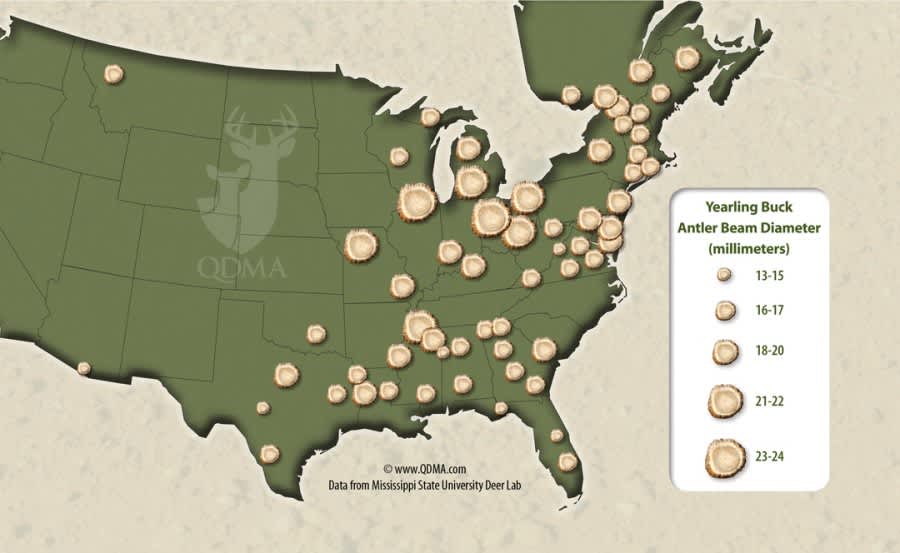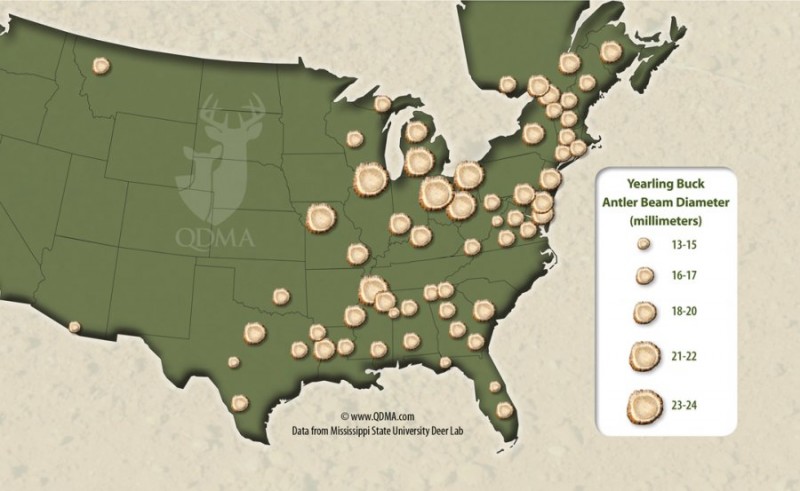Survey of Whitetail Antlers Find Measurements Highest in Midwest
OutdoorHub Reporters 07.29.13

Research conducted by the Mississippi State University Deer Lab has found that whitetail antler measurements across their natural range held the highest averages in Midwestern states, and that larger deer do not necessarily mean larger antlers.
Northern deer are usually found to have an overall greater body mass than their Southern counterparts. This follows what biologists call Bergmann’s rule, which states that populations of a species living in a colder environment are often larger than populations of species in a warmer environment. This is due to the fact that it is easier to keep a large body “well heated” than a small body.
Within a species like whitetail deer, Bergmann’s rule generally holds true. Massive Northern trophy bucks can weigh in above 300 pounds, while a mass less than a quarter of that is considered “large” for Florida’s key deer. However, researchers Dr. Bronson Strickland and Dr. Steve Demarais found that antler size does not necessarily have the same strict connection to latitude.
For their survey, Strickland and Demarais made requests to state agencies for the antler beam diameter of yearling bucks. Although the researchers were unable to factor in scores from the Boone & Crockett Club, the survey resulted in data that they were able to extrapolate onto a map of whitetail ranges. What the researchers found is that the relationship between body size and antler size is weak. Latitude only had a seven percent correlation with antler size.
“Looking at latitude only explained seven percent,” Dr. Strickland told OutdoorHub. “In other words this is a very general trend, a very weak trend that antlers got larger with latitude. Much more variation comes from soil quality and land use.”
The map, originally published in Quality Deer Management Association’s Quality Whitetail, can be seen below:

So while deer up north generally sport bigger antlers, there are much more influential factors that contribute to antler growth. Strickland explains that age, nutrition, and genetics all play an important role in determining antler size.
“Genetics is a factor that you can’t do much about, some deer are predisposed to grow large antlers,” he said.
But a deer’s diet, and the nutrition gleaned from it, can be highly malleable. As the map shows, the Midwest appears to have on average the largest deer antlers. Strickland explains that even though the region is south of surveyed areas such as Maine, lush farmland and healthy soil provide some of the best environments for whitetail.
“Deer over in the Midwest where there’s really good soil and farming, especially lots of soybean and lots of corn, they’re eating a lot of really good food so they’re bigger,” Strickland said. “Latitude plays a role, but local environment plays a bigger one.”

